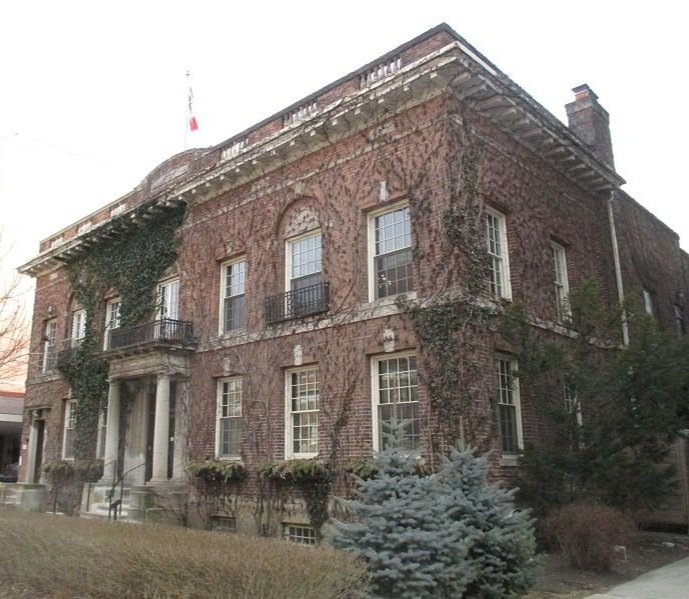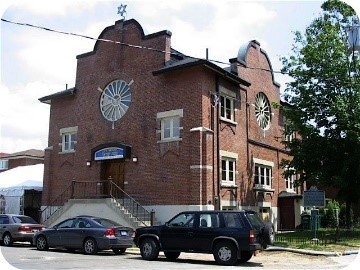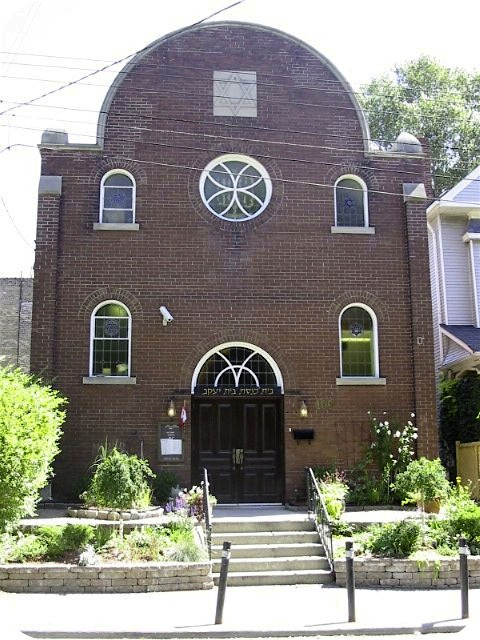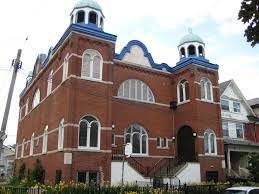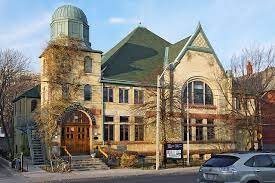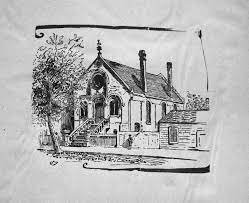Jewish history in Toronto’s plaques, markers, and monuments
This summer, we’re updating and re-printing some posts from our old website. This one was first part of the Ontario blog posted in July, 2019, on our old website. If you’re visiting Toronto from out of town, we recommend you throw a Simply Shabbat bag into your suitcase or duffle for your Shabbat on the road, and print this to tuck into the bag!
Alan L Brown, whose retirement project was to visit and document all Ontario’s historial plaques, began his documentation project with Toronto, and so we are very lucky to know where there are a good number of historical plaques.
One place that is well-known in the Jewish history of this city: Christie Pits. At the corner of Christie Street and Bloor is a plaque describing and commemorating the Christie Pit Riot of 1933, a four-hour riot, with Jews as the target.
You’ll find a plaque about the precursor to the UJA, the Federation of the Jewish Philanthropies of Toronto, at its original location, 220 Simcoe Street, just north of Michael Fleet Avenue.
A good many of our historical sites are around Spadina Avenue, as In the mid-19th Century, many Jewish immigrants settled in the Kensington Market area, around Spadina and College.
Kensington Market is a National Historic Site (and very much still an immigrant market). There’s a detailed set of plaques at Bellevue Square at Augusta Avenue. The plaque reads, in part, “The district was first occupied by British workers, then by Jewish immigrants who converted the Victorian houses into small family-run stores by adding makeshift ground-floor shops. As a result, the area was known for decades as the Jewish market.”
There’s a plaque on the sidewalk of the north-east corner of Spadina and Adelaide about Benjamin Brown, one of the first Jewish architects in Toronto. Many of his buildings were commissioned by the Jewish community.
Among Benjamin Brown’s buildings was The Balfour Building, (named after Arthur J. Balfour, of the Balfour Declaration), commissioned by Jewish entrepreneurs, which housed several clothing businesses, at the edge of the garment district. There’s a plaque on the building, also at the northeast corner of Spadina and Adelaide.
At the southwest corner of Spadina Avenue and St. Andrew Street, there’s a plaque about the Labor Lyceum, which was a meeting place for several Jewish cultural groups, as well as the headquarters for non-Communist trade unions in the Jewish garment district.
A few of our institutions were established in response to Jews not being welcome in existing institutions:
The Primrose Club, for example, was established as a social club for Jews. It was designed by – you guessed it – Benjamin Brown. It later was acquired by the University of Toronto as a Faculty Club. There’s a plaque there, at 41 Willcocks Street, near Spadina and Huron.
The Young Men’s Hebrew Association (YMHA) was created in part because of anti-Semitism within the dominant YMCA. There’s a plaque about the original Young Men’s-Young Women’s Hebrew Association, first formed in 1919, at the Miles Nadal JCC, at the corner of Bloor and Spadina.
World-famous Mount Sinai Hospital, now on University Avenue, began life as the Jewish Maternity and Convalescent Hospital. Not only was it a hospital where the patients had access to Kosher food and could be served in Yiddish, it also offered employment for Jewish doctors, at a time when it was hard for them to find positions elsewhere. There’s a plaque at 100 Yorkville Avenue, the site of the original hospital.
Speaking of hospitals, Baycrest Centre, at Bathurst Street and Baycrest Avenue, (north of Lawrence) has a plaque telling of its origins as the Jewish Old Folks Home, on Cecil Street, in 1916.
Although not Jewish monument, strictly speaking, inside City Hall stands a statue called De Dokwerker (The Docker). It’s a scale model of the one that stands in Amsterdam, commemorating the 1941 general strike in Netherlands. Here’s what Wikipedia has to say about that strike: “The direct causes were a series of arrests and pogroms held by the Germans in the Jewish neighbourhood of Amsterdam, the Jodenbuurt. It started on 25 February 1941 and lasted for two days; on 26 February, 300,000 people joined the strike. The strike was harshly suppressed by the Germans after three days. The 1941 February Strike is considered to be the first public protest against the Nazis in occupied Europe, and the only mass protest against the deportation of Jews to be organized by non-Jews.”
Toronto Synagogues with Historic Plaques
Holy Blossom Temple has two plaques: One, near the main entrance to Holy Blossom Temple on Bathurst Street, south of Eglinton, tells of Holy Blossom’s origin in 1849 as the First Jewish Congregation in Canada West (that is, west of Montreal). There’s another on at 155 Yonge Street, the original site of Holy Blossom, where it began life above a drug store which is long gone.
On Cecil Street, a block east of Spadina, you’ll find the Cecil Street Community Centre. A plaque tells of its history, first as a Christian Church, then the Ostrovtzer Synagogue then a Chinese Catholic Centre, before its present incarnation.
At Maria Street and Shipman Street is a plaque about the Knesseth Israel Synagogue, known as the Junction Shul, which was established in 1913 at Maria Street and Runnymede Road.
There are plaques outside the Kiever Synagogue, built in 1927, at 25 Bellevue Avenue.
In the East end of Toronto, at 109 Kenilworth Avenue, you’ll find the Beach Hebrew Institute (also known as the Kenilworth Shul). There’s a plaque outside about its history, first as a church, then a community centre, and finally as a synagogue.


